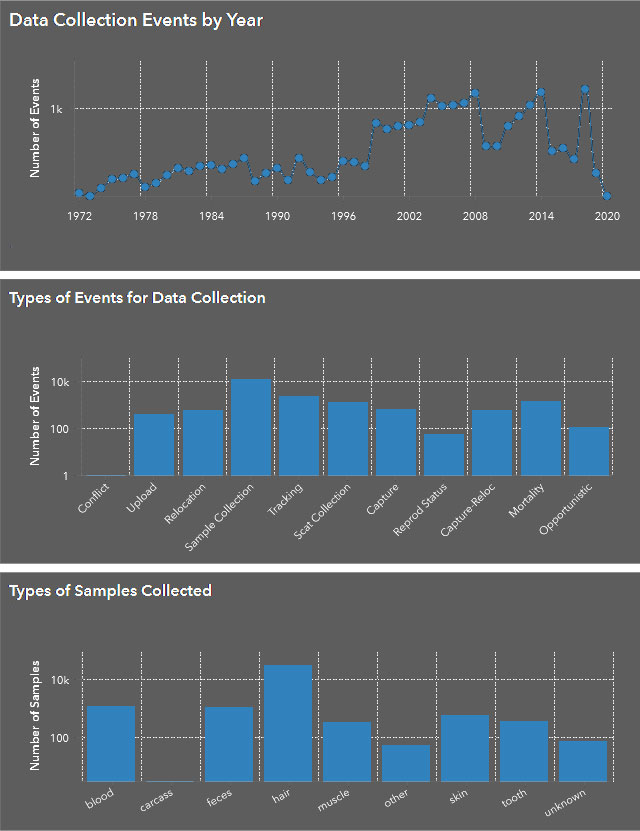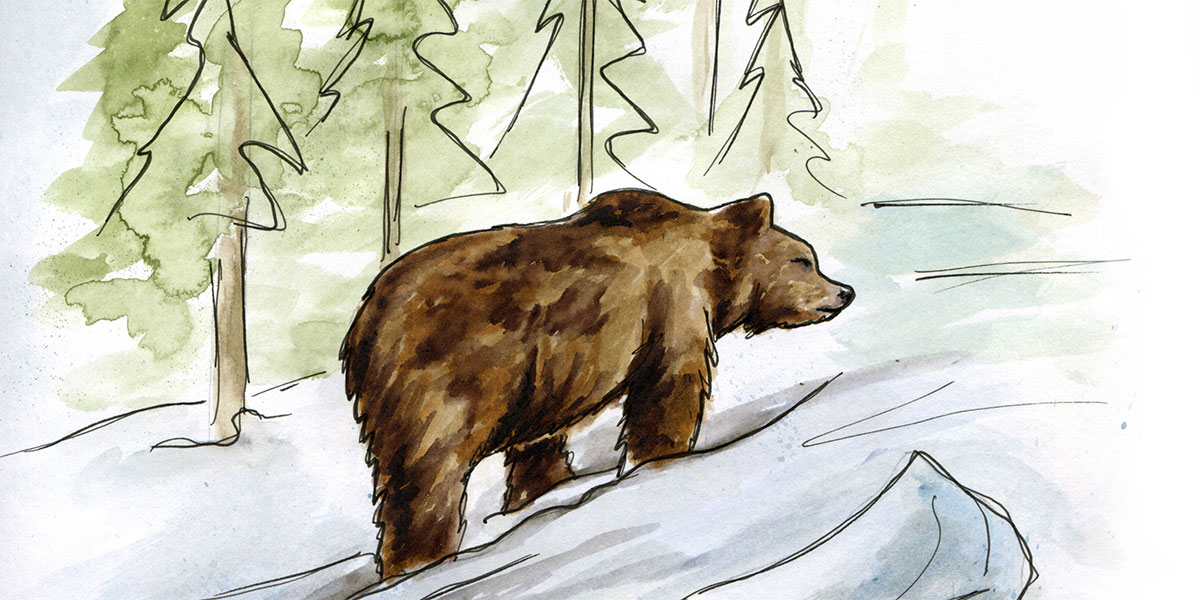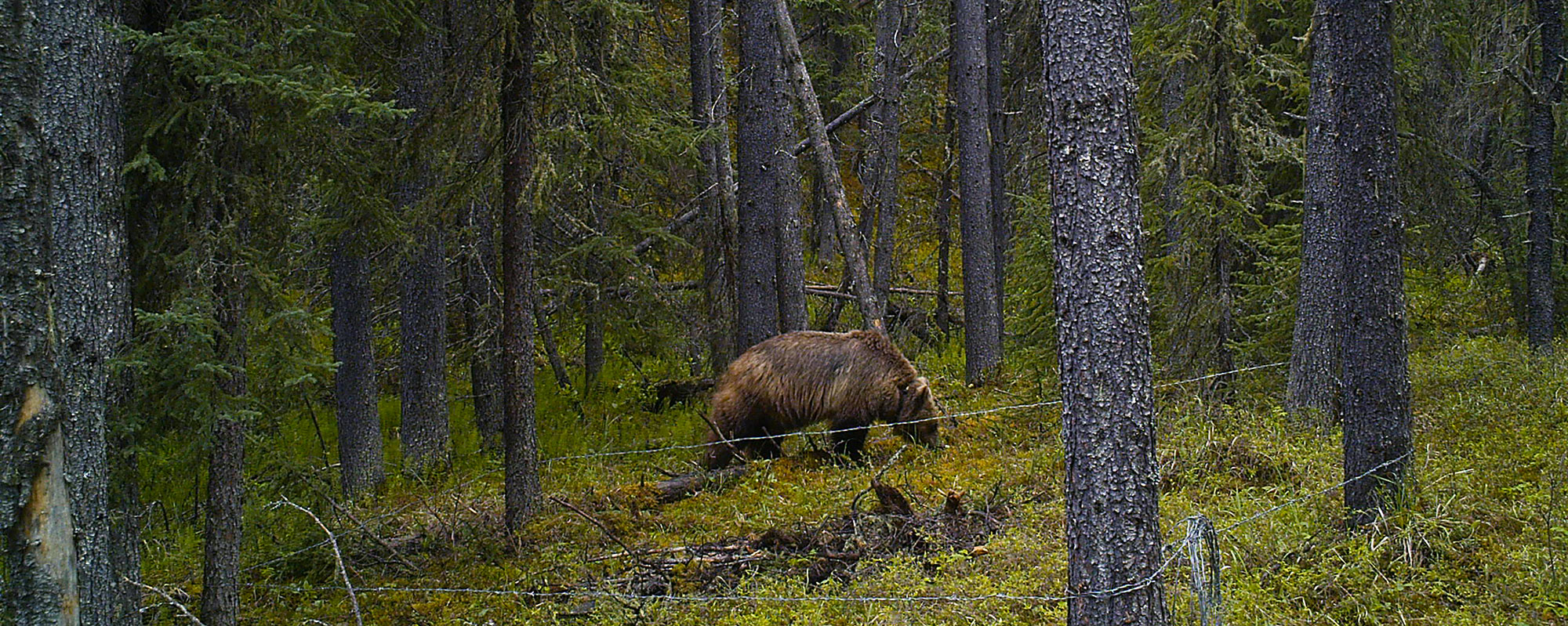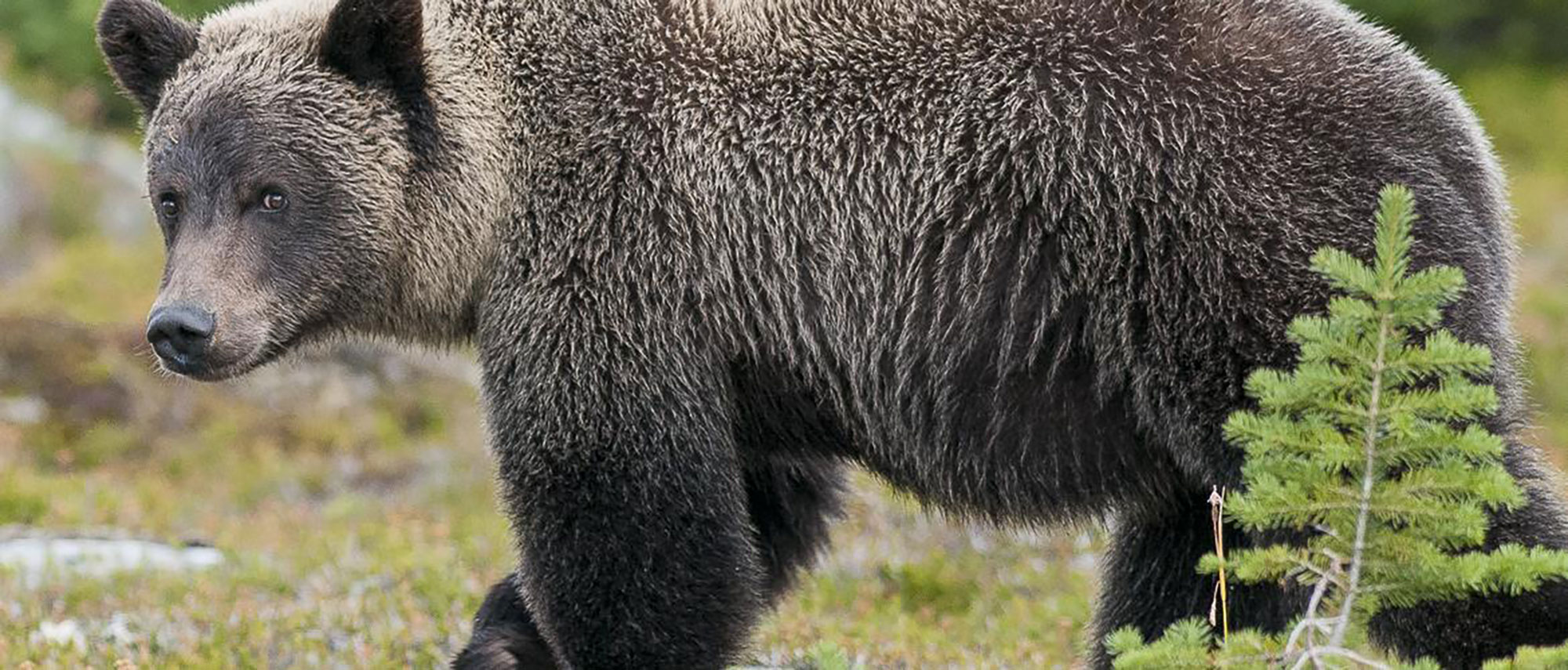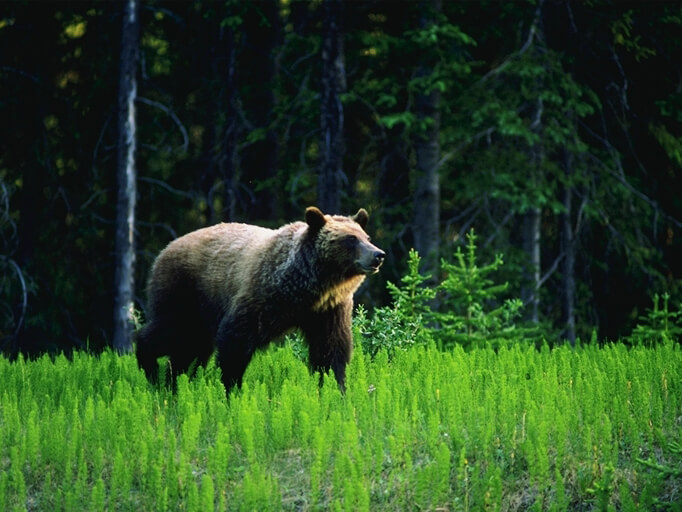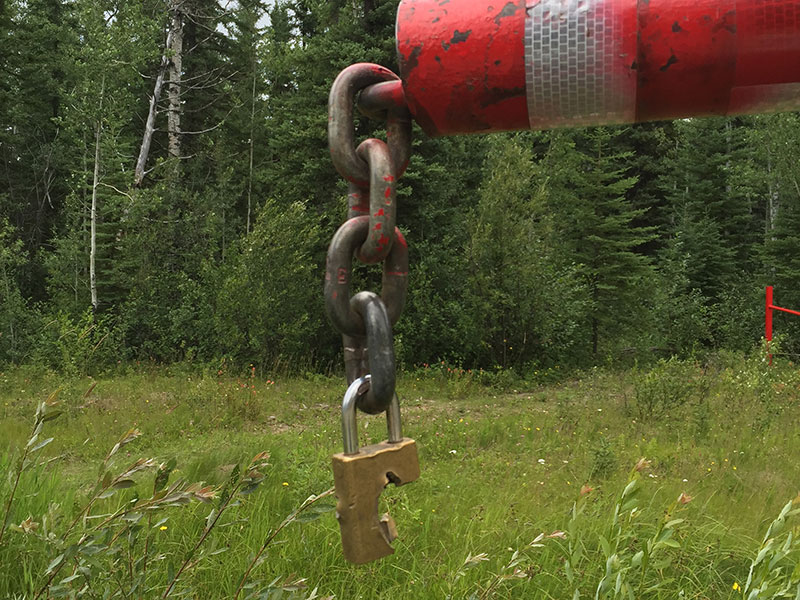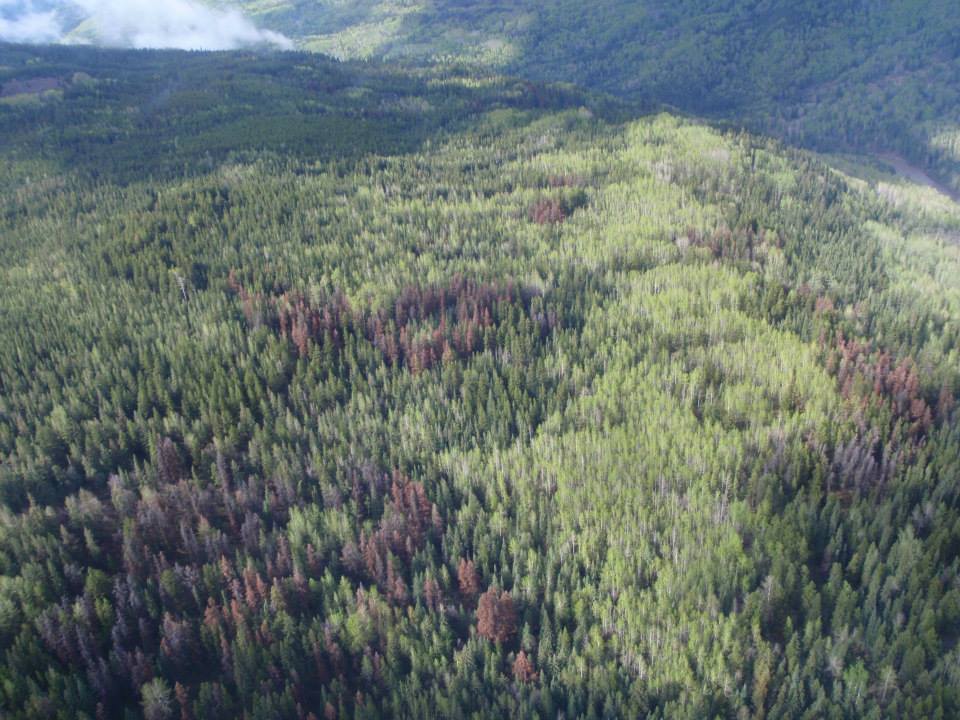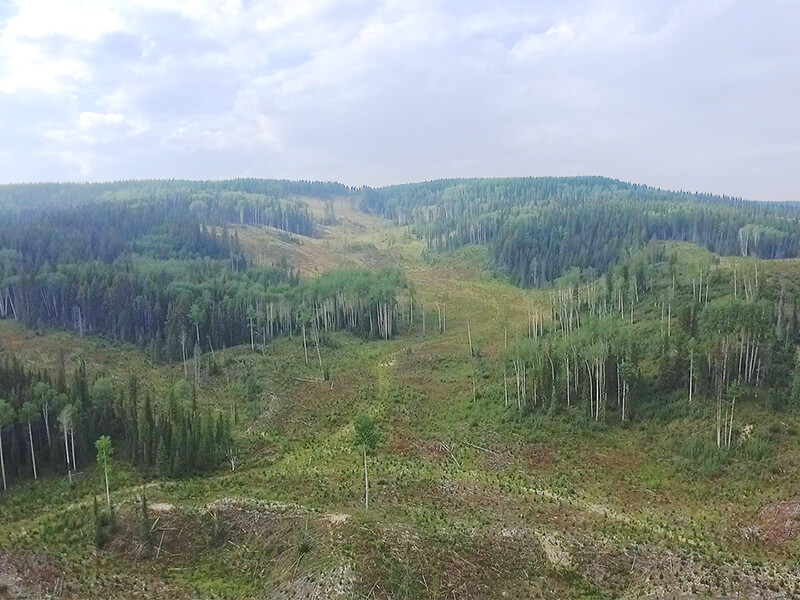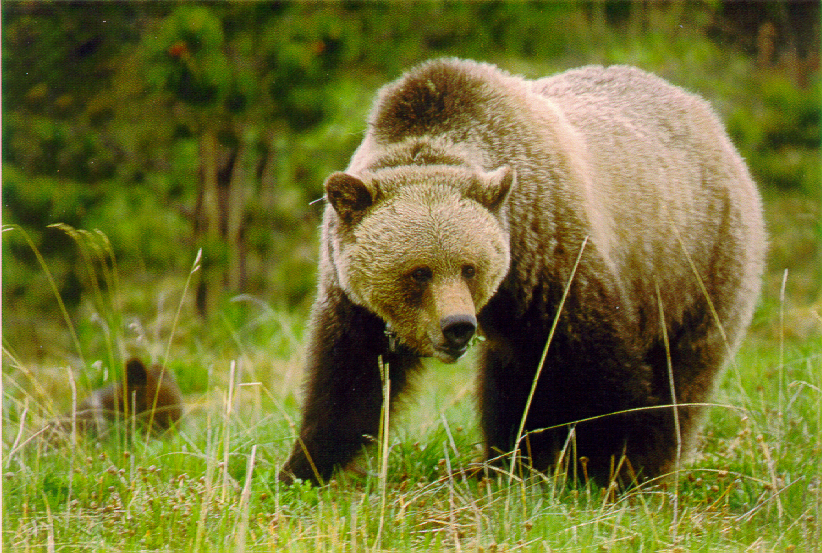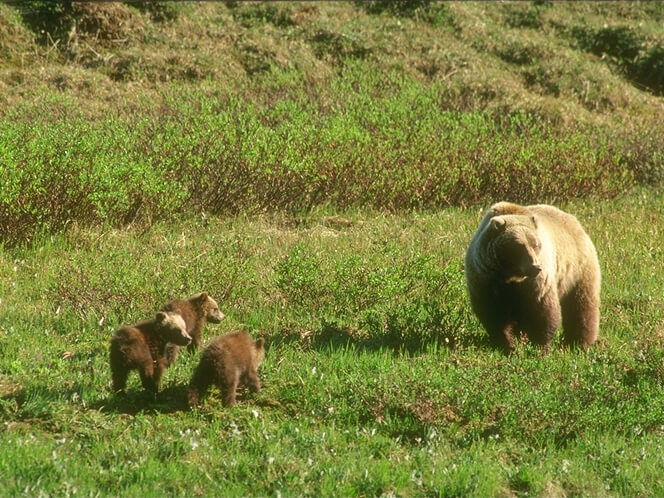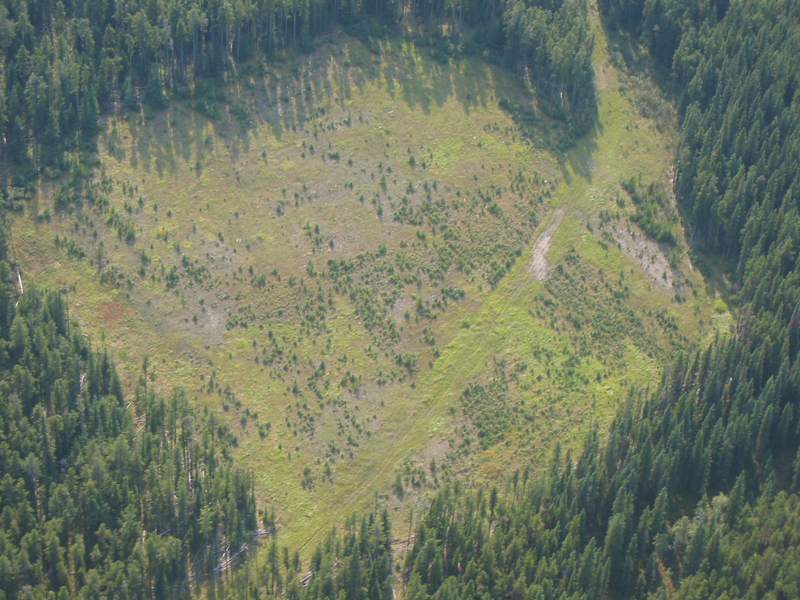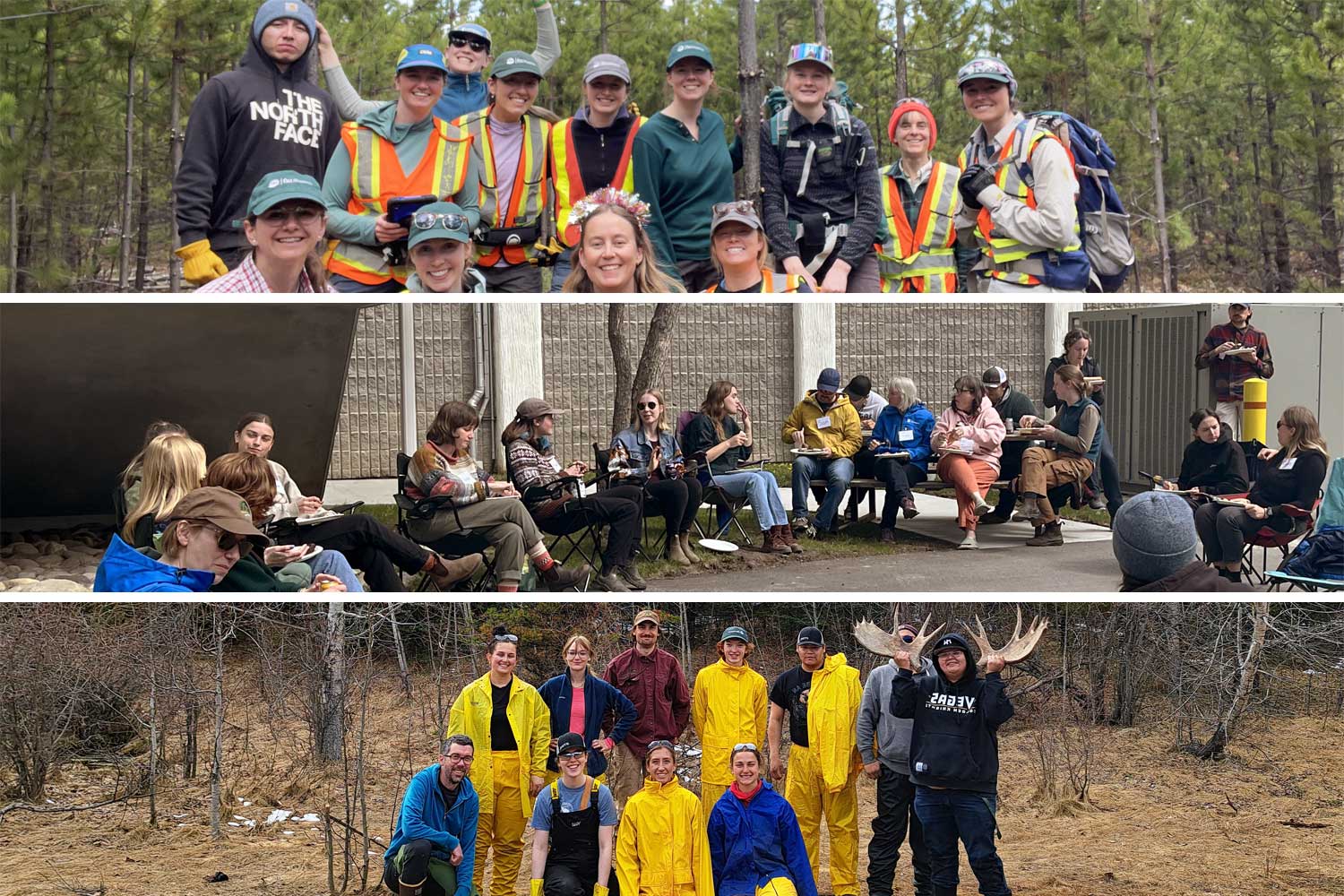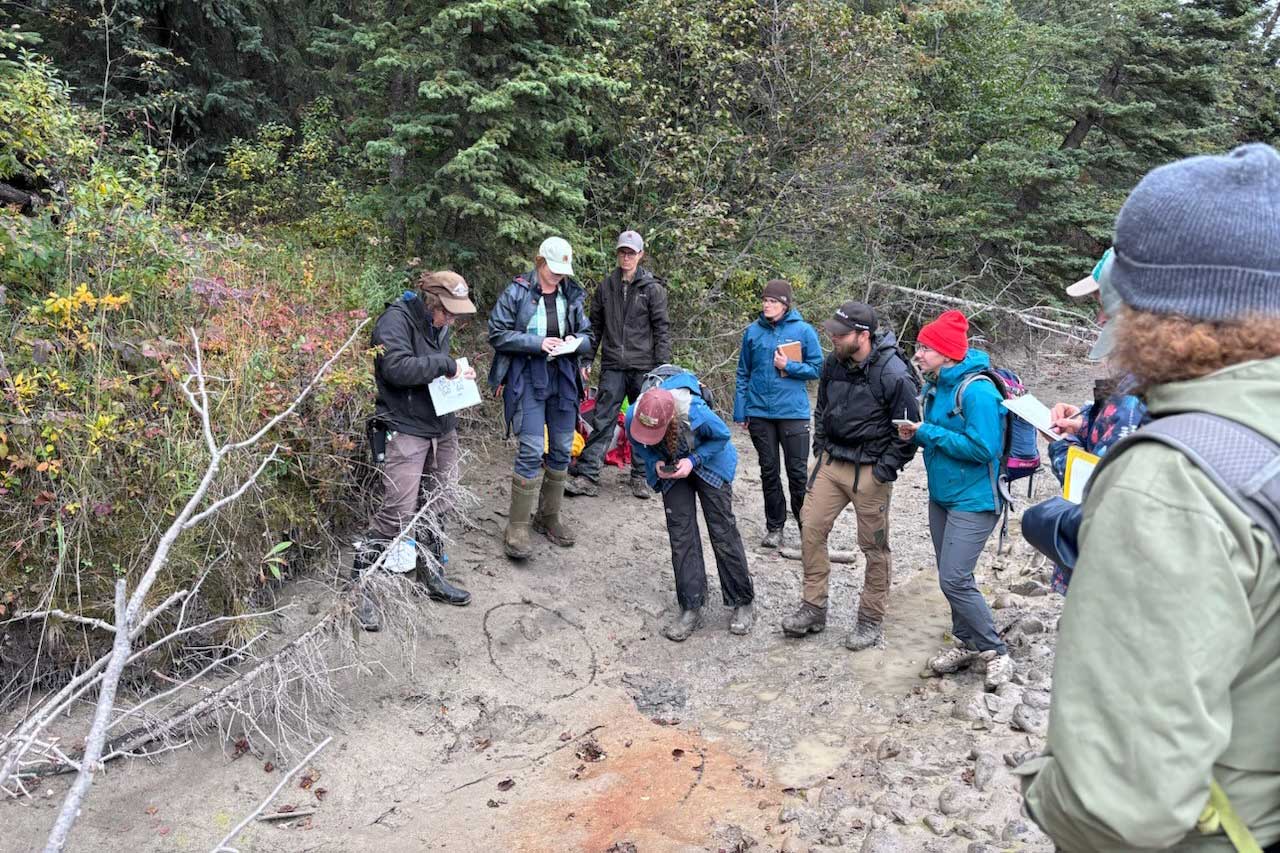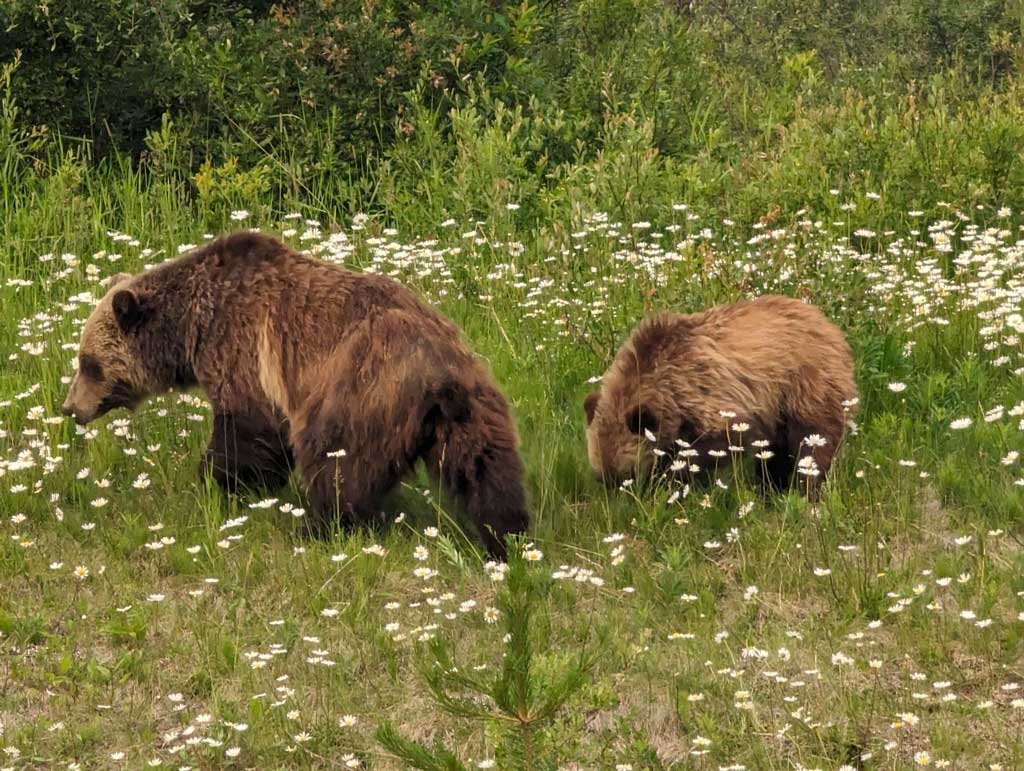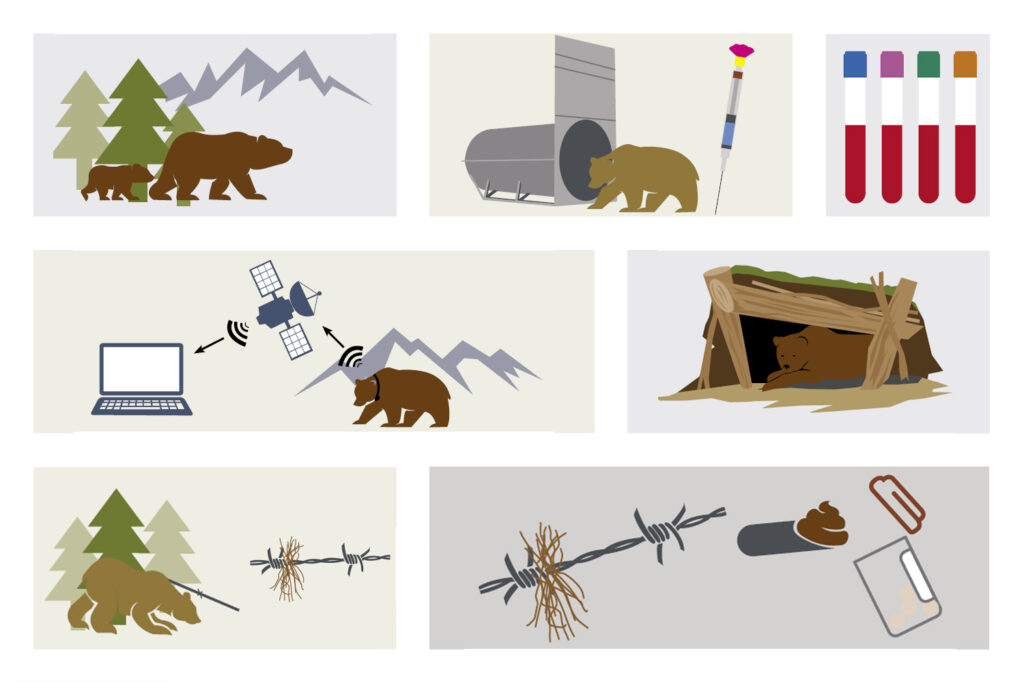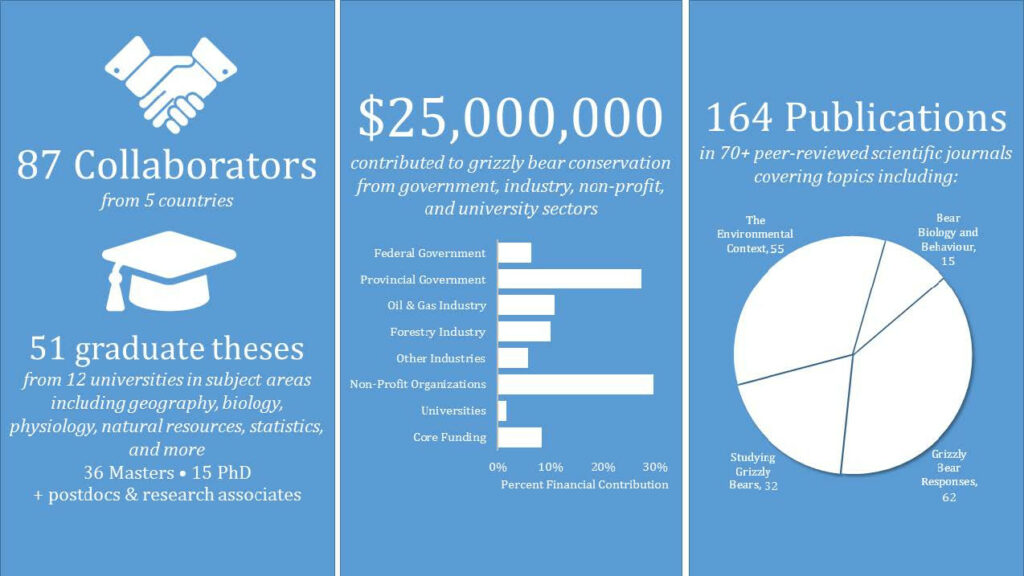
Grizzly Bear Team
Providing knowledge and planning tools to ensure the long-term conservation of grizzly bears in Alberta.
This group encompasses our entire suite of grizzly bear research projects, from our ongoing monitoring work to initiatives dating back over 25 years.
History
The fRI Research Grizzly Bear Program was created in 1998 to study the potential impact of a proposed coal mine south of Hinton. Concerns about grizzly bear populations in Alberta led many more partners to bring questions about the impacts of their activities, and the program steadily expanded in scope.
The program’s original study area was located in west-central Alberta, south of Highway 16 with the Brazeau River as its southern boundary. The study area encompassed 10,000 km2.
In 2003, the Grizzly Bear Program began expanding its study area and today has a suite of GIS tools seamlessly covering the entire grizzly bear range in Alberta. We keep these tools up to date for our partners by updating data layers and adding useful analysis features.

Starting in 2004, we have worked with the Government of Alberta to systematically survey and re-survey Bear Management Areas to estimate grizzly bear populations over time.
Over time we pioneered and fine-tuned non-invasive methods of population monitoring. We systematically collect grizzly bear hair, extract the DNA to identify individuals. By looking at how often we see see the same bears, we can estimate the total population
In 2018 when we conducted the first ever survey of the Swan Hills Area. This allowed the province to create a scientific estimate for Alberta.
Today, the Grizzly Bear Monitoring Project is building on this work.

Long-term Advantage
Our foundation is a rich, long-term spatial dataset. We use detailed grizzly bear movement data obtained from grizzly bears captured and fitted with GPS collars, health and population data derived from scat, hair, and tissue samples, detailed maps of vegetation and human disturbance, and cutting-edge analysis. When combined, these products represent the most important grizzly bear conservation tools available to land and resource managers who are faced with important decisions regarding land management in grizzly bear habitat.
In 2023, we started a new population monitoring initiative, which can be found here.
A
C
N
P
R
S






Research Themes
Since 1998, the Grizzly Bear Program has published over 200 scientific papers and graduate theses. While it would be extremely challenging to summarize all the research results, we have grouped program activities into five general themes. Click a topic below to find a chronological list of publications related to that theme.
This theme covers mapping and GIS classification, habitat change and analysis, landscape structure, vegetation distribution, and phenology and climate work.
This theme includes population survey methods and the use of telemetry data from collared bears.
Grizzly bear biology encompasses natural history, diet and energetics, behaviour and predation, and genetics and intraspecific interactions.
This theme relates to our our work on capture and handling techniques, body condition and stress, and the relationship between habitat and bear health.
This is a very large topic covering: habitat associations and conservation, anthropogenic disturbance generally, roads, human recreation, industry, forestry, mining, oil and gas, climate, and conflict with humans.
Since 1998, the program has added immensely to our understanding of grizzly bears, helped to train the next generation of wildlife biologists, and improved the methods that scientists use to study many species and ecosystems.
Advances of the Grizzly Bear Program
This collection of infographics shows off six ways the Grizzly Bear Program has transformed grizzly bear research and management in Alberta.
Summary of Publications
Over two decades of peer-reviewed papers, reports, and graduate theses for masters and PhD students have left a lasting and living scientific legacy.








